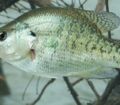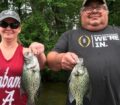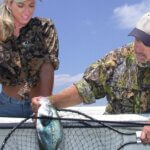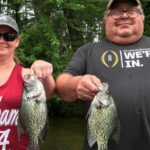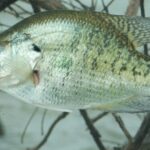Editor’s Note: To find a bank-bound crappie, you must know the temperature of the water. Forget about the time of year. When the water temperature becomes warm enough for crappie to spawn, they will move to the bank. With a not-just-right water temperature, the crappie will pull away from the bank. Throughout April and perhaps even May, various sections of the South may experience unexpected cold fronts that will cause the crappie to swim away from the bank.
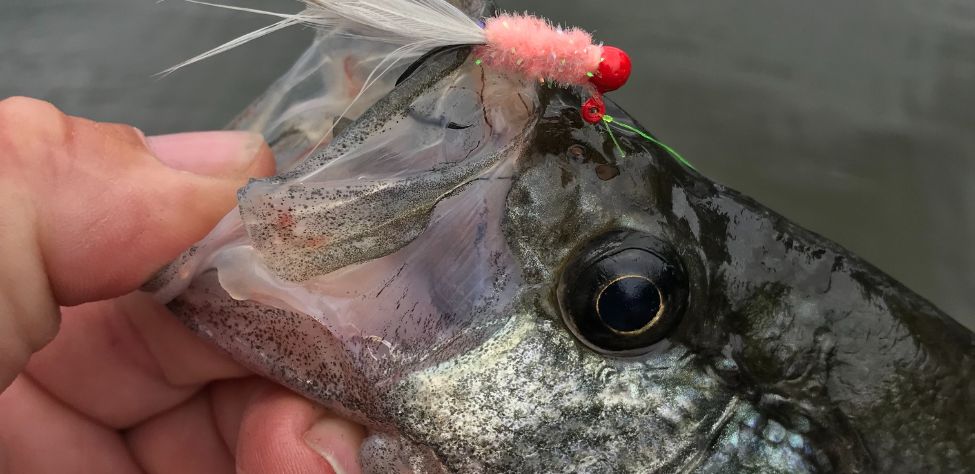
Crappie-fishing enthusiast Nolen Shivers’ other pre-spawn technique (see Day 2) involved fishing docks. “Remember that most lake and river residents who have docks usually build some brush shelter or put some structure out in front of them so they can come down and sit on their docks and catch fish. The brush is usually about a cane pole’s distance or a little further from the dock. A depth finder and/or forward-facing sonar will pay off for you. You can locate this sunken cover on your depth finder by motoring your boat back and forth in front of the dock. The crappie will move into this structure during the pre-spawn because it gives them cover while waiting for the temperature to warm up. If there’s no cover in front of a dock, then assume the cover is under the dock. Oftentimes, a dock owner will sink the cover under the dock to keep the fish close to his pier. You will catch crappie if you cast light jigs under the dock.”
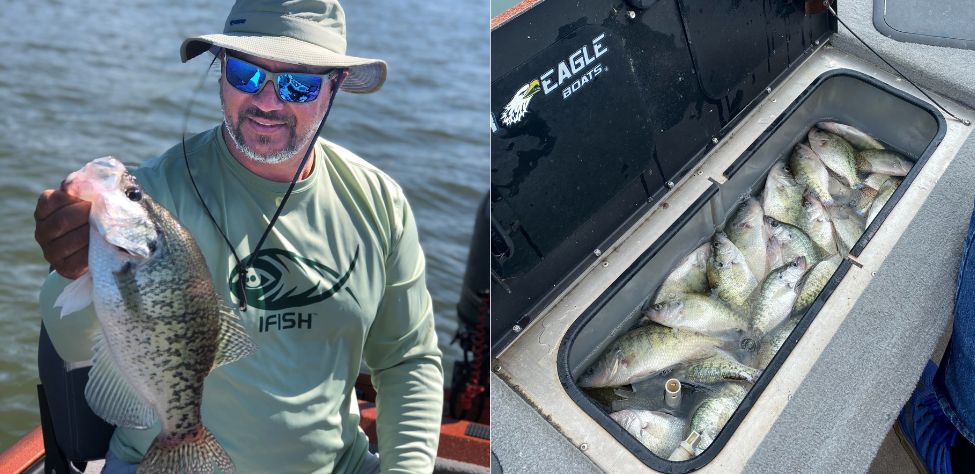
Feeder Creek Crappie in the Spring:
Also, look for crappie in the spring in the mouths of feeder creeks. Large schools of crappie will often move out of a river channel and hold in mid-water in the mouth of a creek due to the warmer water and the large numbers of baitfish. Then, as soon as that creek water starts to warm up enough to trigger the spawn, the crappie will move up the creek channel and onto the spawning areas.
Several methods will catch these creek-mouth crappie. Most anglers prefer to troll in the mouths of creeks using 1/24- and 1/32-ounce jigs on 2- and 4-pound-test lines. You can fish the lighter line when you’re trolling open water and don’t have to worry about losing crappie in thick cover. The smaller the diameter of the line, the faster and the deeper it will allow the crappie jig to sink. To troll a 1/32-ounce jig 8- to 10 feet under the surface, an angler may use a 2-pound-test line and troll slowly. Too, you can buoy the schools off in the mouths of creeks and cast to them with either minnows or jigs.
However, since these open-water schools of crappie move constantly, the fisherman will have to relocate the schools and the buoys. Utilize a depth finder and trolling motor to stay on top of these schools. Then, either vertical jig or fish a live minnow straight down to the school to catch the crappie.
Looking for more content? Check out our YouTube channel and watch “Why Canoe for Crappie” by John E. Phillips.
Expert Guidebooks on Crappie Fishing: Best Sellers
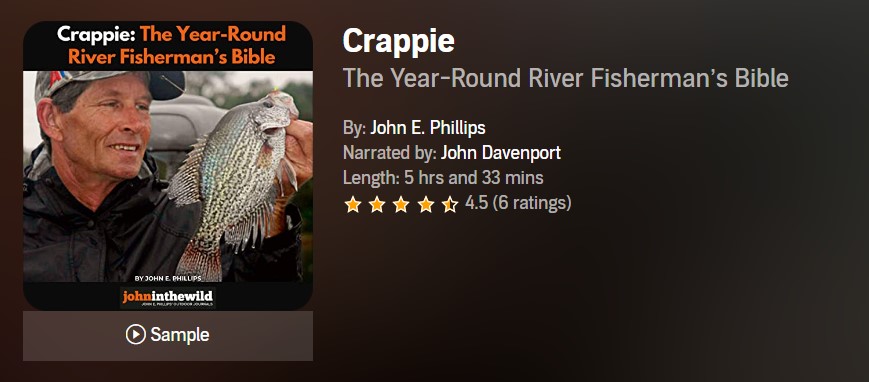
Fishing rivers for crappie and being able to find and catch speckled sides consistently has long been one of the mysteries in the crappie-fishing world.
“One of the reasons that river systems are so difficult to fish is because the water’s either rising or falling in them,” says Ott DeFoe, the 2019 Bassmaster Classic champion.
Rivers also are very susceptible to floods and droughts and constantly have current moving through them. Often fast current or slow current in rivers is created by rain or droughts upstream. When rivers flood, they can wash away fish habitat like logs, sunken trees, manmade brush piles and stake beds. But that’s the time when a river also creates new crappie hot spots that haven’t been available to the crappie or the fishermen before the flood.
Because river systems are so unpredictable, I’ve felt the best way to get the most useful information on how to fish rivers for crappie is to talk to numbers of anglers all over the nation to learn their best tactics.
In this book, I’ve gleaned crappie-fishing wisdom from three dozen crappie anglers and guides from a dozen states, who consistently catch crappie at all times of the year. The tournament crappie fishermen in this book fish most of the country at different times of the year on various river systems and lakes. And, these anglers use techniques you never may have considered, including:
- Setting up a casting ring with your electronics to keep you from getting too close to the crappie that are holding on underwater structure, while you’re fishing all the way around the structure;
- Buying an automotive laser temperature gauge to measure water temperature
- Evaluating the most-productive places to sink brush and other structure, according to prevailing wind direction, the crappie’s summer, fall, winter, and spring migration patterns, and other factors.
VERSIONS: AUDIBLE, KINDLE & PRINT
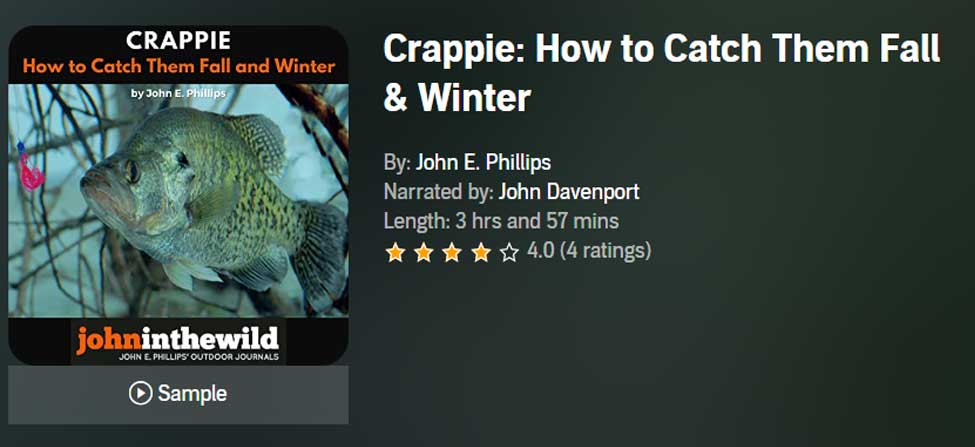
Crappie: How to Catch Them Fall & Winter
Yes, you can catch and eat crappie during the fall and winter months. Often, at many places, you’ll catch more and bigger crappies in the fall and winter than you do in the spring and summer. To learn where to find and how to catch cooler weather speckled sides, we’ve interviewed a wide variety of some of the nation’s best tournament crappie fishermen and guides.
Many of the individuals you’ll hear about in this audiobook are tournament crappie pros who travel the country to fish in crappie tournaments from New York to Florida and from Virginia to California. They use the latest crappie-finding equipment, the best poles, rods, reels, line, and the most-productive baits. Each of the people mentioned in this book has the ability to be dropped out of an airplane anywhere in the United States and catch crappie on any lake close to where they land that contains crappie.
From over 50 years of crappie-fishing experience, I’ve learned that you get the best advice by interviewing a large number of people who have different tactics and fish under various water, weather, and fishing-pressure conditions.
In this book, you will learn:
- How to spider-rig (slow-troll), which is one of the fastest-growing techniques for catching the most and biggest crappies in the shortest time
- How to catch crappie on crank baits and when and where using a crank bait is the most appropriate
- How to find areas of any lake that will hold large schools of crappies during the winter months – places you can return to time and again and expect them to be there
- Why competing in crappie tournaments is one of the quickest ways to learn how to catch more and bigger crappie faster
- Why and how to look for and catch the biggest crappie in a lake
VERSIONS: AUDIBLE, KINDLE & PRINT

Catch Crappie All Year: Fishing a Single Pole, Using No Boat, and Farming Crappie
I’ve interviewed some of the best crappie fishermen in the nation for my new audiobook, Catch Crappie All Year: Fishing a Single Pole, Using No Boat and Farming Crappie to learn how, where, and when to catch the most crappie with or without a boat while single-pole fishing. I’ve also included information on how to grow a crop of crappie to catch every day of the year. Although I’ve fished in fully rigged crappie boats costing $45,000 – $90,000-plus that can have up to 16 rods at one time to slow troll, I still enjoy….
- Watching a quill cork sink in a brush top
- Fishing with an ultralight spinning rod
- Reeling jigs or minnows along a grass line and feeling that thud when a crappie takes the bait
- Fishing with family and friends, even if we all can’t fit in one boat
- Participating in less-expensive and hassle-free yet highly-productive crappie fishing like single poling
I’ve tried to capture in this new audiobook the old way of crappie fishing with new twists and detailed tactics to aid you in catching crappie all year.
VERSIONS: AUDIBLE, KINDLE & PRINT
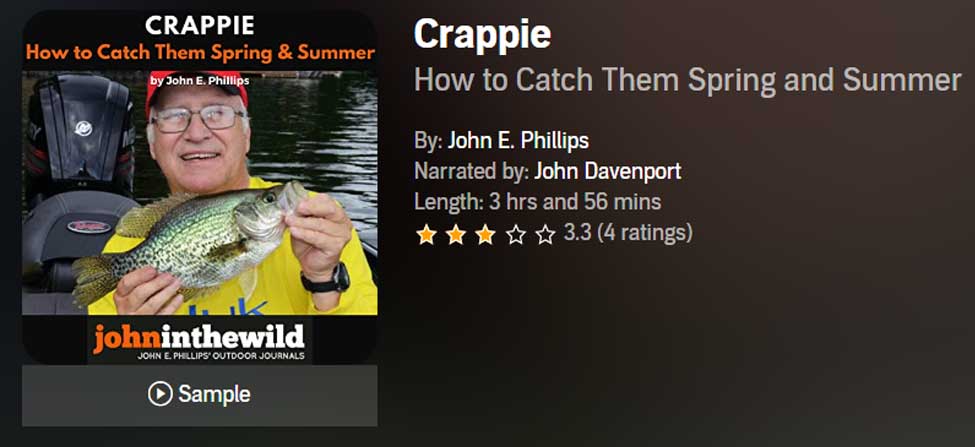
Crappie: How to Catch Them Spring and Summer
You can catch crappie all year long if you know where to find them and what techniques to use to catch them. However, crappie fishing is so technical these days, and we’ve learned so much about how to crappie fish because of the professional crappie-fishing circuits, that one book can’t hold all the information.
This book is the first of a three-part series on how, where, and when to catch crappie, with the best crappie fishermen in the nation. Many of these men have proven they are the best, because they’ve won crappie-fishing tournaments or been successful fishing guides for many years.
This audio version of Crappie: How to Catch Them Spring and Summer includes crappie pros like Ronnie Capps, who has won seven national championships and over $1 million with his partner Steve Coleman.
We also have Malcolm Lane, Stokes McClellan from North Carolina, Billy Blakeley from Reelfoot Lake, John Woods, Kent Driscoll, fishing biologist and professional basser Ken Cook, and many others. We asked the questions that crappie fishermen want answered about how to find and catch crappie during the spring and summer months, and these fishing tips are the result.
In the world of crappie fishing, no one man knows it all, and that’s why I’ve interviewed so many fishermen, asked so many questions, and tried to get so many answers for you about how to fish.
VERSIONS: AUDIBLE, KINDLE & PRINT
Tomorrow: Taking Springtime’s Mid Water Crappie

